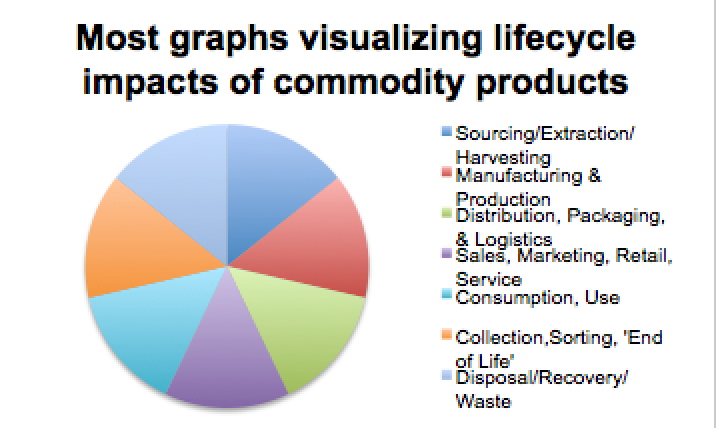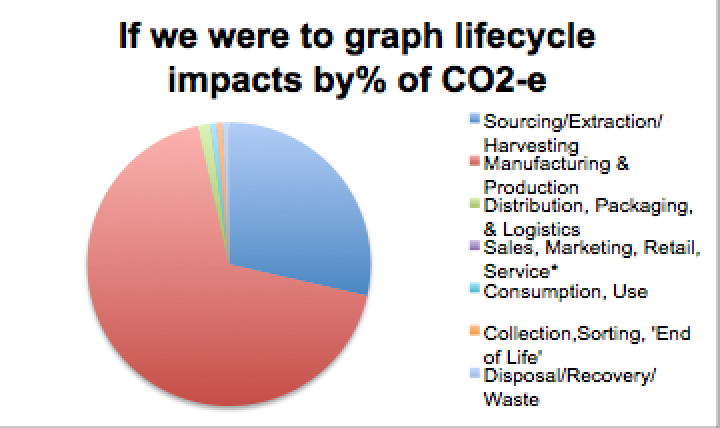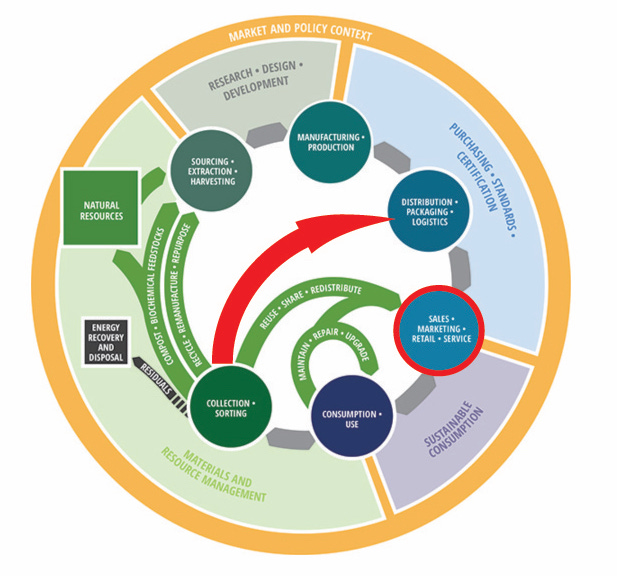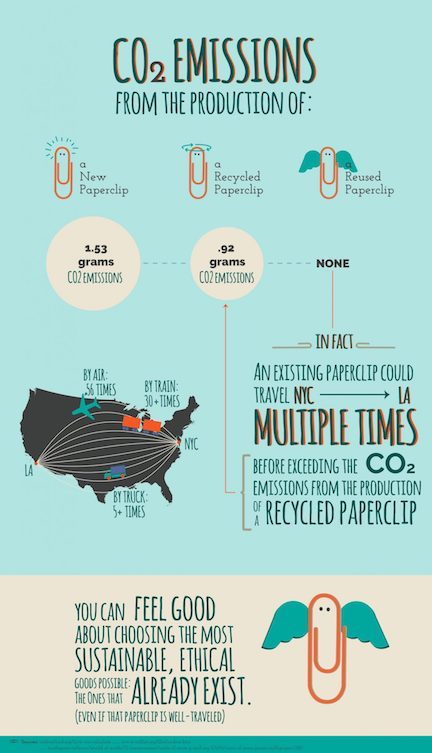The Business Case for #MainstreamReuse
Let’s talk about the social cost of carbon.
“Estimates of the social cost of carbon vary widely as a function of different ethical parameters. Faced with values ranging from US$10 to US$1,000 per tCO2 and above, some perplexed policymakers have adopted ‘target-consistent’ carbon pricing instead.” – Nature.com, 2017
Per David Wallace-Wells (referencing the UN’s 2018 IPCC report conclusions), the social cost of carbon could be as high as $5000/ton by 2030: “‘avoiding that scale of suffering’…requires such a thorough transformation of the world’s economy, agriculture, and culture that ‘there is no documented historical precedent.'” (Also per DWW, “the New York Times declared that the report showed a ‘strong risk’ of climate crisis in the coming decades; in Grist, Eric Holthaus wrote that ‘civilization is at stake.'”)
Let’s picture the ground-level impacts:
$5000/ton CO2-e = a $50/gallon surcharge on gasoline costs (or $9 of CO2-e value embedded in a single existing 2 lb piece of steel kitchen cookware)…
$10/ton = a 10¢ surcharge on gasoline costs.
As with so many things, the truth is somewhere in the middle.
At $250/ton (a conservative science-based estimate), we should already be paying an extra $2.50/gallon.
How is this good news for Reuse?
Existing goods are the most sustainable, environmentally ethical products possible: they are literally embodied energy and matter.
40% of US emissions are directly tied to the production of goods. We have the data-driven potential to radically change the consumer marketplace on a strictly practical basis.
Most products that don’t run on gasoline (or get eaten) effectively generate no emissions during their active use. Even the logistics of moving them around have a tiny footprint relative to the whole:
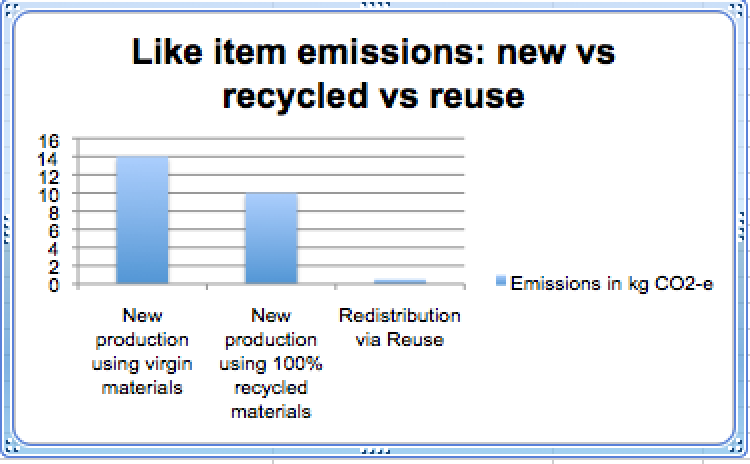
Let’s take a quick look at a circular economy model. Where does Reuse fit into this equation? How well does this visualization tell the impact potential of the reuse sector?
Let’s pause to examine how we have been visually explaining product lifecycle processes and impacts:
What does this mean for reuse?
Where can we add the most value? Strategic aggregation and curation for multiple flows as early in the lifecycle as possible:
Maybe used sneakers aren’t your jam. How about houses? Sitting in other people’s cars? Our aversion to reuse is cultural. But hey, let’s focus on something that avoids the squeamish reaction altogether:

But wait, there’s more!
Consumers are clamoring for better options both upstream and downstream:
Instagram.com/#ZeroWaste. While we’re still seeing dissonant new-manufacture market solutions and eco-influencers touting all manner of new product, the waking-up has begun in earnest and will increasingly swing in the direction of reuse (we can help with this!).
The ‘sofa tsunami’ is just ramping up and waiting for someone to channel its resources (there’s a ripe market to be developed in making it easier for boomers and others to ethically divest of their household goods without having to drive all over town)…
In addition to being impatient for product and service solutions that make it easier to just be an ethical human, already, we’re SO OVER corporate gaslighting:
The first step to reducing your emissions is to know where you stand. Find out your #carbonfootprint with our new calculator & share your pledge today!
— bp (@bp_plc) October 22, 2019
Bullshit meters are on high alert:
We believe the health of our water sources is essential to the health of our communities. Find out more about the work we’re doing to restore our watersheds. #CocaColaRenew
— The Coca-Cola Co. (@CocaColaCo) October 7, 2019
And ‘we plant a tree’ schemes are deserving of our growing suspicion:
There are no easy shortcuts to sustainable commerce in a market filled with myriad complicating issues and few elegant solutions.
Reuse is one of the few.
In the carbon-constrained economy ahead, the competitive advantage goes to: companies that build trust by using data to design – from the ground up – environmentally ethical business decisions, products, services, and messaging — as well as to companies whose models are revamped to work within an economic model that ties profit directly to emissions source reduction and, in service to self-preservation with an increasingly angry public, avoids making exaggerated claims now that might bite them in the posterior later on.
The market opportunity in reuse+trust:
The closer we get to putting a market price on carbon, the more attractive the sector’s data – and assets – become. The *longer* we wait to put a price on carbon, the more attractive the sector’s data – and assets – become. This is what uniting behind the science of climate change means for the future of the Reuse Sector: building infrastructure for the thoughtful aggregation and redistribution of energy and matter is an investment with a high likelihood of increasing returns over time.
Good point to wrap up? Questions?
If we have time or you have interest, some additional thoughts:
Here’s how not to share unflattering data:
Levi’s execution of LCA ‘influence laundry behavior’ strategy: https://www.youtube.com/watch?v=MQXyvMSyEos
Instead, we offer for consideration an environmentally ethical interpretation of the same data: FourLevisCharts
Notable differences:
-interpretation without profit motive = very different story (in a perfect world: “to save the most water and be the most environmentally friendly, please wear your jeans an extra year – or even longer…and while you do that, we’ll work on pulling together a reuse/redistribution program to buy back *and* resell all those vintage levi’s because we all know they just get better with age…”
-interpretation without bias = appropriately framed accountability (in a perfect world: “we know manufacture and processing = big carbon and big water, so we’re going to do what we can to rework our model…btw- did you know that doing your laundry less frequently has positive impacts? That’s not just for Levi’s, either!”)
–accurate claims stated publicly would have empowered levi’s consumers to make informed choices about *how* to reduce their water consumption (“while it’s not our business to tell you how to do things, we gleaned some insights from our research, and wanted to make sure you know that both every-wear laundry and every day showers are strictly optional within an environmentally ethical lifestyle: you can feel *good* about heading into the office with next-day denim and a bit of that bedhead on casual Friday!”)
References and source data in no particular order:
https://www.globalcarbonproject.org/
Refusal & Consent: A Brief Social Manifesto for the Responsible Divestment of Material Resources
https://www.watercalculator.org/water-use/the-hidden-water-in-everyday-products/
https://www.rff.org/publications/explainers/social-cost-carbon-101/
https://www.journals.uchicago.edu/doi/abs/10.1086/701900
https://runrepeat.com/eco-sneakers-research
https://circulareconomylab.com/circular-economy-framework/
https://country-level-scc.github.io/explorer/
https://www.forbes.com/sites/heatherfarmbrough/2019/03/15/coca-cola-reveals-it-produces-3m-tonnes-of-plastic-packaging-a-year-in-ground-breaking-report/#79ea6ead670f



